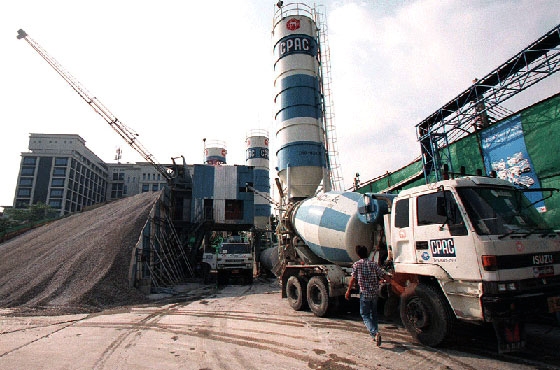Saudi Arabia continues to enjoy hefty cement demand owing to large numbers of big-ticket projects being announced by the developers every now and then, Global Research said in its June 2013 sectoral report. Overall, Saudi cement companies profit witnessed an increase of 8.2 percent mainly because of increase in cement sales volume.
Cement demand in the Kingdom during 1Q13 stood at 15.5 million compared to 14.0 million in the same period last year. Saudi Cement and Southern Province Cement sold most volumes amongst all. Market share of Saudi Cement stood at 15.7 percent while that of Southern Province Cement was 13.0 percent at the end of the quarter.
Cement and clinker production during the quarter stood at 13.1 million ton and 15.6 million ton respectively which is 16.3 percent and 9.3 percent higher than the comparable period. Clinker production of Yanbu witnessed the most growth at 61.4 percent followed by that of 30.3 percent of Saudi Cement. Cement production of Yanbu topped with 51 percent growth followed by that of AL Jouf at 12.5 percent.
Average realization prices in the Kingdom dropped by 2.5 percent SR254.1 per ton in 1Q13. Increasing cement demand compensated for the drop in the prices, which many of the companies would have also taken into account and reduced their realization prices. Arabian Cement and Eastern Cement prices topped at SR306/ton and 276/ton respectively. Lowest realization price was that of Al Jouf Cement and Southern Province Cement at SR224/ton and SR247/ton, respectively.
Overall GCC cement companies witnessed better demand in 1Q13 compared to 1Q12 which are clearly visible from the double digits growth in revenue and profits. Although exact cement demand cannot be ascertained due to unavailability of any statistical body, but with average cement price in the range of $66/ton and revenue at $1.43 billion, the rough amount of cement sold by the 25 listed players stand at 22 million tons during the quarters.
Apart from these, the newly listed cement companies which we have not incorporated yet into our calculation and other unlisted players along with exports to GCC from neighboring countries, the overall demand should be roughly in the range of 26-27 million in the quarter.
Saudi Arabian Ports Authority has announced that the commercial ports are now ready to receive cement and clinker. The supply aims to meet rising demand for the building material, which has been boosted by infrastructure and construction works.
GCC cement sector top-line grew by 13.8 percent during 1Q13 to reach $1.4 billion, mainly due to pick up in real estate and construction activity in Oman and Qatar along with continuation of big ticket projects in the Kingdom of Saudi Arabia.
Top-line of Qatar increased the most during the quarter by 10 percent. Oman stood second and reported a growth of 6 percent, while Saudi Arabia reported an increase of 3.2 percent during 1Q13. On the other hand, UAE which reported better performance in previous quarters, reported a drop in the revenue by 2 percent during the period.
Although lots of projects are being rolled out by some of the big developers in UAE but same has not been able to translate for the cement companies, which gives rise to the speculation that their share of the pie is being taken up by neighboring countries.
Net profit of GCC's 25 listed cement players during the quarters witnessed an increase of 16.9 percent, mainly because of the strong growth in Omani companies which recorded a 34.0 percent increase in profits.
Ever since Saudi Arabia opened its market for cement, most of USE's produce has diverted from Oman to Saudi Arabia which is improving the financial performance of the local Omani companies which were previously badly hit by the cheap imports from UAE.
UAE which reported a drop in the revenue, ended with report second highest growth in income during the quarter. Profitability of the UAE companies rose by 25.4 percent during 1Q13 to $99.5 million. Such a decent growth in profits was only possible because of hefty contribution from the noncore income sources of the players.
Noncore income of the UAE companies grew by 55 percent during 1Q13 and contributed 111 percent to the overall income of the sector. Such a high growth in the noncore income was possible because majority of the UAE listed companies are significantly invested in equity and real estate market of UAE and both of them witnessed significant improvement during the period.
The Saudi Gazette
30 September
























































